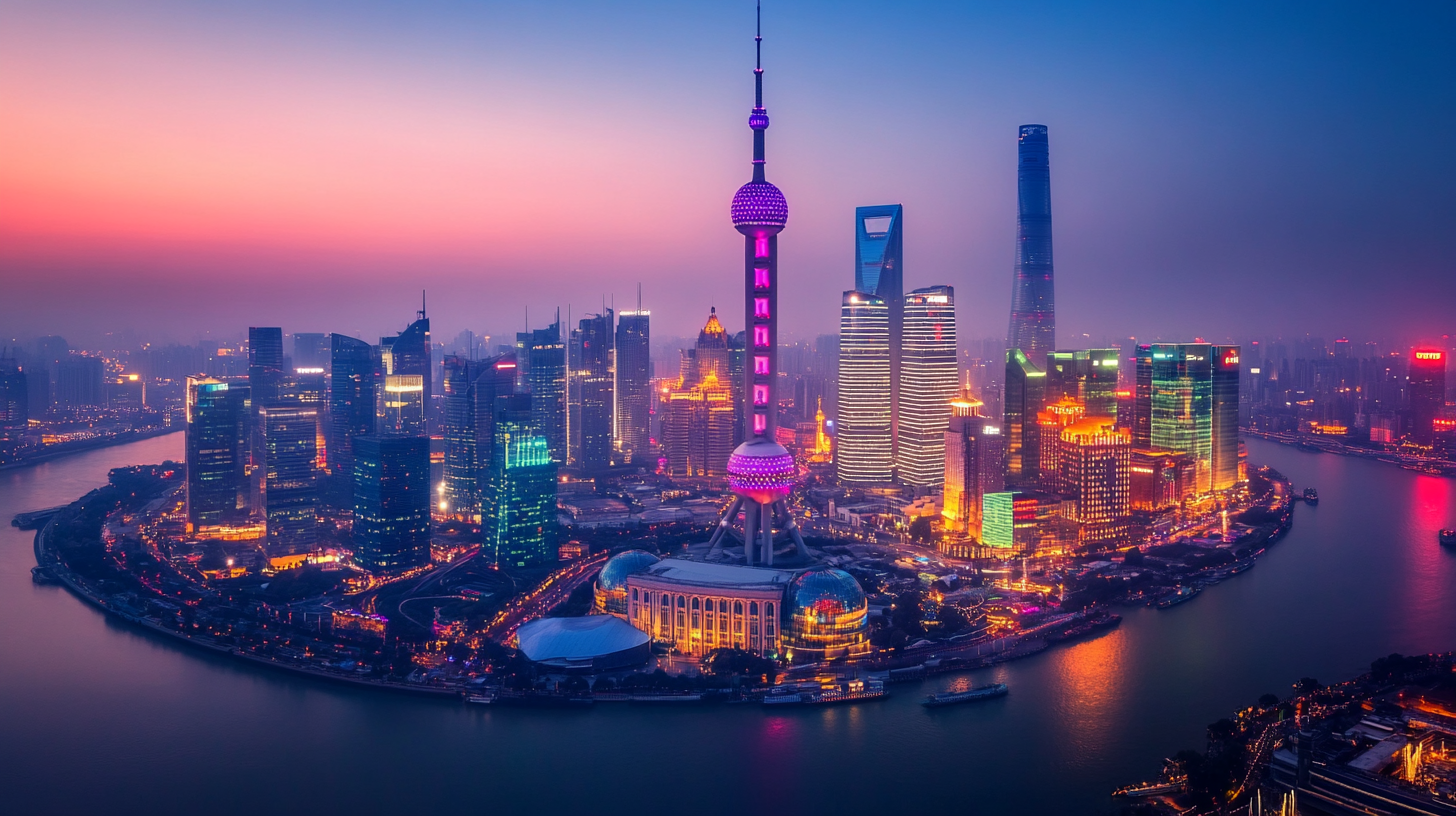
Understanding the Challenges with Best China Products for Global Buyers
In today's interconnected world, the pursuit of high-quality products from China presents both opportunities and challenges for global buyers. As one of the largest manufacturing hubs, China offers a vast array of products that cater to diverse market needs. However, navigating the complexities of sourcing, quality control, and compliance can be daunting for international businesses. This blog aims to explore various alternatives available to global buyers who are looking to leverage China's manufacturing strengths while mitigating potential risks. By understanding the challenges associated with sourcing from China, buyers can make informed decisions, adapt their strategies, and ultimately enhance their supply chain efficiency. Whether it's identifying reliable suppliers or exploring innovative sourcing methods, this discussion will provide valuable insights for those keen on maximizing their success in the Chinese market.

The Evolution of China's Manufacturing Capabilities and Global Impact
China's manufacturing capabilities have evolved significantly over the past few decades, transitioning from simple assembly tasks to advanced production processes that leverage cutting-edge technology. This transformation can be attributed to substantial investments in infrastructure, technology, and workforce skills. As a result, China has become a global manufacturing powerhouse, producing a vast array of products for international markets. However, this evolution also introduces challenges for global buyers who must navigate a complex landscape of quality control, supply chain management, and regulatory compliance.
Moreover, the global impact of China's manufacturing surge cannot be underestimated. It has reshaped supply chains worldwide, forcing businesses to rethink sourcing strategies and inventory management. The rise of Chinese products has also sparked debates about sustainability and ethical production practices, as consumers increasingly demand transparency from manufacturers. For global buyers, understanding these dynamics is crucial to making informed decisions and maintaining competitiveness in an ever-changing market. With the right approach, businesses can harness the benefits of China's manufacturing strength while mitigating potential risks.

Identifying Common Quality Control Issues with Chinese Products
When sourcing products from China, quality control issues frequently arise, posing significant challenges for global buyers. One common problem is inconsistent manufacturing standards, where different suppliers may not adhere to the same level of quality. This inconsistency can result in product variation that doesn't meet the buyer's specifications or expectations, leading to customer dissatisfaction and potential loss of business.
Another prevalent issue is the lack of rigorous testing and quality assurance measures in many factories. Some suppliers may prioritize low production costs over product quality, sacrificing critical checks that ensure safety and compliance. Buyers often face products that may contain hazardous materials or have defects that could endanger users. Without thorough inspections, global buyers can find themselves in precarious situations, facing recalls or even legal liabilities due to subpar products entering their markets.
Additionally, communication barriers may exacerbate these quality control challenges. Language differences can lead to misunderstandings regarding product specifications or quality expectations, further complicating the relationship between buyers and suppliers. As a result, it is essential for global buyers to establish clear communication channels and engage in diligent oversight throughout the sourcing process to mitigate these risks effectively.
Understanding the Challenges with Best China Products for Global Buyers - Identifying Common Quality Control Issues with Chinese Products
| Product Category | Common Quality Issues | Impact on Buyers | Percentage of Buyers Affected (%) |
|---|---|---|---|
| Electronics | Short lifespan, overheating | Frequent returns, negative reviews | 25% |
| Textiles | Color fading, fabric quality | Loss of customer trust, increased costs | 30% |
| Toys | Safety hazards, non-compliance | Legal issues, recalls | 20% |
| Furniture | Structural integrity, finish quality | Increased returns, bad reputation | 15% |
| Machinery | Inadequate performance, faulty parts | Production delays, higher expenses | 18% |
Navigating Trade Regulations and Compliance for Global Buyers
Navigating the intricate landscape of trade regulations and compliance is a critical challenge for global buyers seeking the best products from China. With a rapidly evolving regulatory environment, it’s essential for buyers to stay informed about various tariffs, import duties, and product standards that may affect their sourcing strategies. China’s dynamic trade policies, driven by both domestic goals and international pressures, require businesses to adopt a proactive approach in understanding compliance mandates that directly impact their operations.
Moreover, one must consider the unique compliance requirements imposed by different countries when importing goods from China. Regulations such as labeling, safety standards, and customs documentation vary significantly and can pose hurdles for those unprepared. Therefore, global buyers need to invest time in researching and implementing the necessary compliance protocols to avoid potential pitfalls. Engaging with local experts or compliance consultants who can provide guidance tailored to specific product categories and destination markets is often a worthwhile strategy, ensuring that shipments conform to all legal and regulatory obligations.
Strategies for Effectively Sourcing Products from China
When sourcing products from China, global buyers often encounter a range of challenges, from cultural differences to communication barriers. To navigate these difficulties effectively, it's essential to employ strategic sourcing methods. One of the best strategies is to conduct thorough market research. Understanding market trends and consumer preferences can help identify products that are not only high in demand but also align with quality standards.
Tip: Utilize online platforms and trade shows to engage with suppliers. Building relationships with manufacturers is crucial, as it fosters trust and opens lines of communication. Consider visiting factories or utilizing local agents who can provide insights into the production process and quality control measures.
Another effective strategy is to clearly define your requirements and expectations from the outset. Creating detailed specifications can help minimize misunderstandings and ensure that suppliers deliver products that meet your needs.
Tip: Implement a rigorous evaluation process for potential suppliers. This includes checking references, reviewing past performance, and conducting product samples. A well-vetted supplier can significantly reduce risks and ensure a smoother sourcing experience.
Understanding the Challenges with Best China Products for Global Buyers
Building Trust and Relationships with Chinese Suppliers
Building trust and fostering strong relationships with Chinese suppliers is essential for global buyers looking to successfully navigate the complexities of international trade. The cultural differences and communication barriers can pose significant challenges, but understanding the nuances of these interactions can lead to fruitful partnerships. Establishing a reliable line of communication is the first step; regular updates, candid discussions about expectations, and transparency regarding business operations can set a solid foundation. Utilizing technology, such as video calls and instant messaging apps, can bridge these gaps and allow for more personal engagement.

Additionally, investing time in understanding the suppliers' business practices and values is crucial. Chinese suppliers often prioritize long-term relationships over short-term gains, which requires global buyers to demonstrate commitment and reliability. Visits to factories and in-person meetings can reinforce this trust, showcasing an investment in the partnership that goes beyond mere transactions. By embracing these relationship-building practices, buyers can not only mitigate risks but also enhance the quality of their investments in Chinese products.
